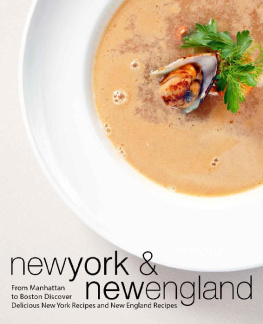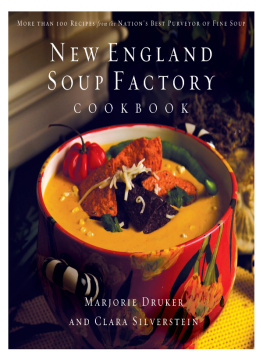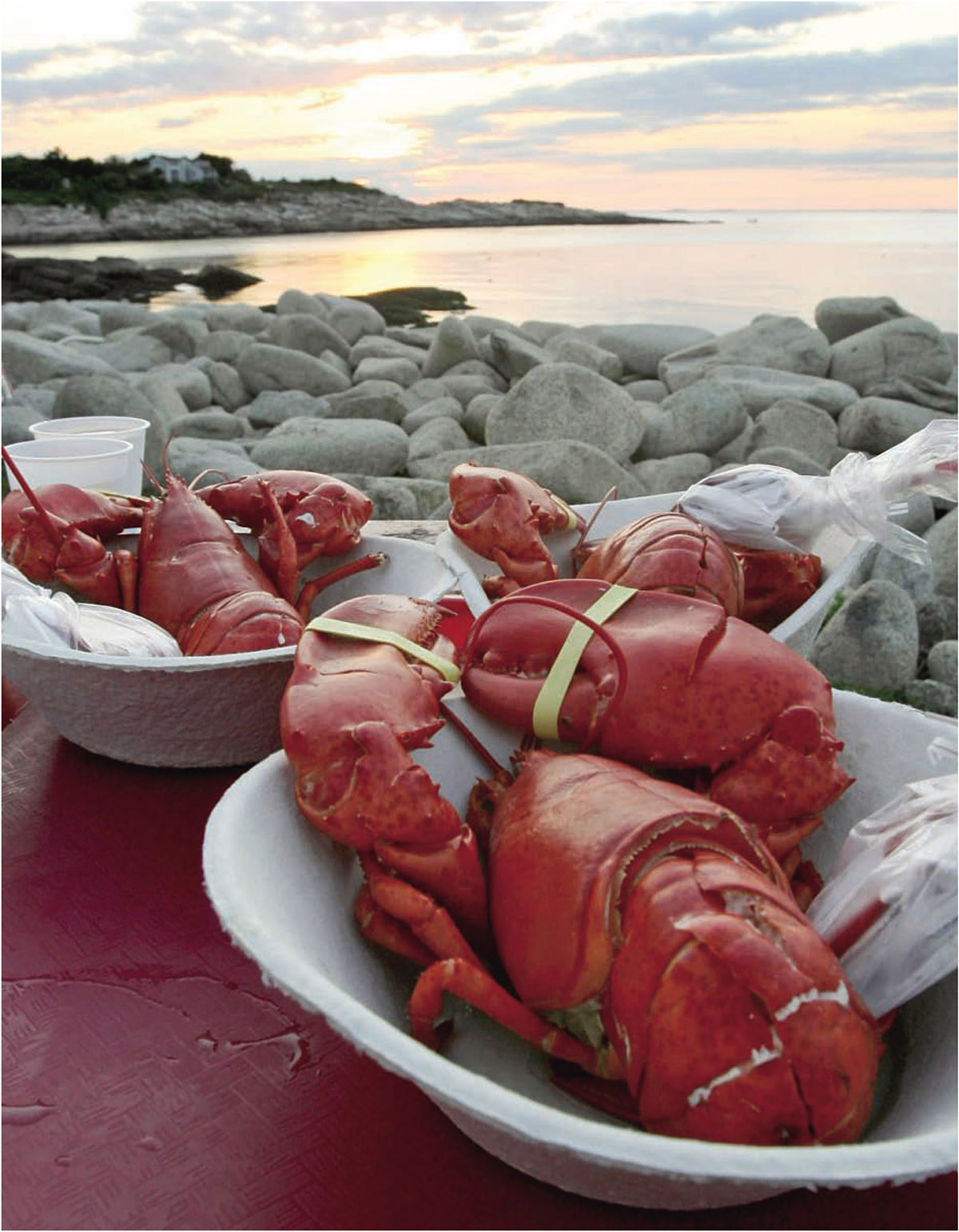Acknowledgments
The community of cooks and chefs in Boston is a spirited and generous group of men and women who are willing to share recipes, vendors, and kitchen experiences. We thank those professionals who let us watch them cook and taught us their recipes. Were also grateful to the writers who regularly contribute recipes to The Boston Globe. They hear about outstanding dishes, call the cooks who made them, and go into their own kitchens to figure out streamlined versions.
Among those writers are Karoline Boehm Goodnick, who also styled many of the photographs in this book, and Jonathan Levitt, who photographs everything he makes, and who is represented often in these pages. Other Globe contributors who have been writing about food for many years include Jane Dornbusch, Keri Fisher, Christine Merlo, Andrea Pyenson, Julie Riven, Tony Rosenfeld, Debra Samuels, Jill Santopietro, Rachel Travers, Lisa Yockelson, and Lisa Zwirn.
Janice Page, who oversees book projects on the Globe staff, is quick, graceful, and amusing, and production assistant Liberty McHugh Pilsch works the computer like a talented pianist running over the keyboard. Ann Luisa Cortissoz, a longtime food copy editor, and friend to all contributors, also pitched in. Among the Globe photographers who contributed to this book are John Blanding, Wendy Maeda, Wiqan Ang, Michele McDonald, Joanne Rathe, Essdras M. Suarez, Aram Boghosian, Dina Rudick, John Tlumacki, Pat Greenhouse, Vincent DeWitt, George Rizer, Jonathan Wiggs, David L. Ryan, and Erik Jacobs.
You have to really love food to be excited by just reading recipes. And you have to be really dedicated to go home and spend your free time at the stove. Were lucky to have so many writers and editors who are both.
Thank you all.
Appetizers
B ecause theyre the first thing you serve, appetizers are almost more important than the rest of the meal. What guests drink and eat at the beginning of the night often sets the tone for the whole evening.
You can offer substantial appetizers as a way to get people to mingle. Half a dozen guests sitting around nibbling small pizzas or sticky glazed chicken wings may make a little mess, but it will certainly relax everyone and get previously unacquainted guests talking. But if your dinner is more formal and everyone arrives dressed up, you probably want to avoid complicated things and begin with simple marinated olives, a white bean-olive spread, or homemade crackers.
Appetizers generally fall into three categories. There are the hors doeuvres you serve in the living room so guests have a little something with their drinks. Other appetizers, also served in a sitting area, are more substantial and perhaps presented together. These heftier nibbles might include gourgeres , the little French cheese puffs, deviled eggs, or a Middle Eastern hummus. If the array is hearty enough, you can skip a first course at the table.
That first course or appetizer also varies greatly. For an elegant dinner, offer baked eggs topped with a dot of caviar or thin potato slices draped with smoked salmon. A festive family meal might begin with the Greek spinach pie spanakopita, baked stuffed clams, or steamed mussels. If a few friends have gathered to celebrate, you might make shrimp ceviche or country pt.
There are no rules, except that you should offer something right at the beginning. If youre pressed for time, a bowl of roasted almonds or a nice local cheese is just right. If you have a moment a few days ahead of time, tuck homemade cheese crackers into the freezer or grill eggplant for poor mans caviar.
But whatever you decide, remember this: If you have a reputation as a good cook, your guests will eat lightly that day. Theyre counting on dining well at your table. So you owe them a fine nibble when they walk in the door.
Rye Crackers
Thin and crisp, these rye crackers go well with cheese, a spread, or on their own. Roll them out, prick the dough with a fork, then use a pastry or pizza cutter to make professional-looking rectangles.
MAKES 24
1 cup rye flour
cup all-purpose flour
1 teaspoon salt
6 tablespoons butter, cut into pieces
6 tablespoons cold milk
Butter (for the baking sheet)
Extra all-purpose flour (for olling)
1 egg white, beaten with 1 teaspoon water
In a food processor fitted with the metal blade, combine the rye flour, all-purpose flour, and salt. Work the machine in on-off motions for 5 seconds. Add the butter and process until the mixture resembles sand. With the machine running, pour in the milk. Mix just until the dough forms a ball. Turn the dough out onto a lightly floured board and shape it into a smooth, flat cake. Wrap it in foil and refrigerate for several hours. Set the oven at 400F. Have on hand a large, rimless baking sheet. Butter it lightly. Remove the dough from the refrigerator and place it in the center of the baking sheet. Press it with the heel of your hand to make a 6-inch cake. Lightly flour the dough and, with a rolling pin, roll it into a rectangle about 12 by 14 inches. If the edges are jagged and the sides not quite even, thats OK. With the tines of a fork, pierce the dough all over the surface. Using a pastry or pizza cutter, make 3 vertical cuts and 5 horizontal cuts to form 24 crackers. Brush the dough with the egg-white mixture. Bake the crackers for 15 to 20 minutes or until they are brown. If the crackers on the edges get too brown, remove them early and transfer them to a wire rack to cool. When the crackers are done, transfer all of them to the rack. Let them cool completely. Store in an airtight container for up to 1 week.
Ingrid Lysgaard
Cheese Crackers
A simple dough, made like a pastry crust, but with lots of cheese, is rolled into logs and sliced for baking. The rounds are very cheesy and flaky.
MAKES 40
1 cup flour
teaspoon baking powder
teaspoon salt
Pinch of cayenne pepper
cup (1 stick) unsalted butter, at room temperature
pound cheddar cheese, grated (to make 2 cups)
In a bowl, combine the flour, baking powder, salt, and cayenne pepper. Whisk to blend them. In a food processor, combine the butter and cheese. Pulse the mixture until blended. Add the flour mixture and pulse again until the dough comes together to form moist clumps. Lay two long sheets of plastic wrap on the counter. Divide the dough between the sheets. Working with one sheet at a time, roll the pastry up in the sheet to form a log shape. Roll it under your palms to form a log that is about 7 inches long and about 1 inches in diameter. Wrap completely in the plastic wrap, securing the ends. Do the same with the other dough and sheet. Refrigerate the logs for at least 3 hours or for up to 2 days. Set the oven at 375F. Line two baking sheets with parchment paper. Using a straight-bladed knife, cut the logs into -inch thick slices. Arrange them on the baking sheets. Bake for 15 to 18 minutes or until golden. Cool on the baking sheets. Transfer to a wire rack to cool completely.









